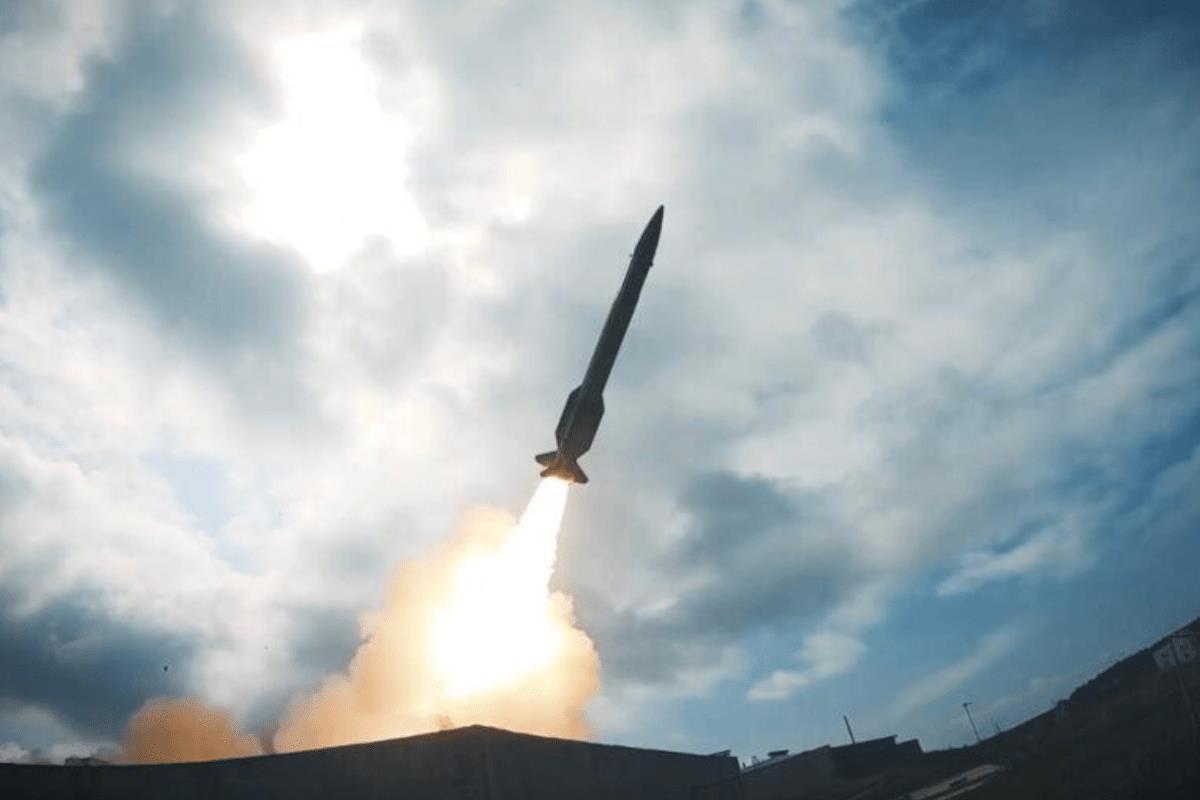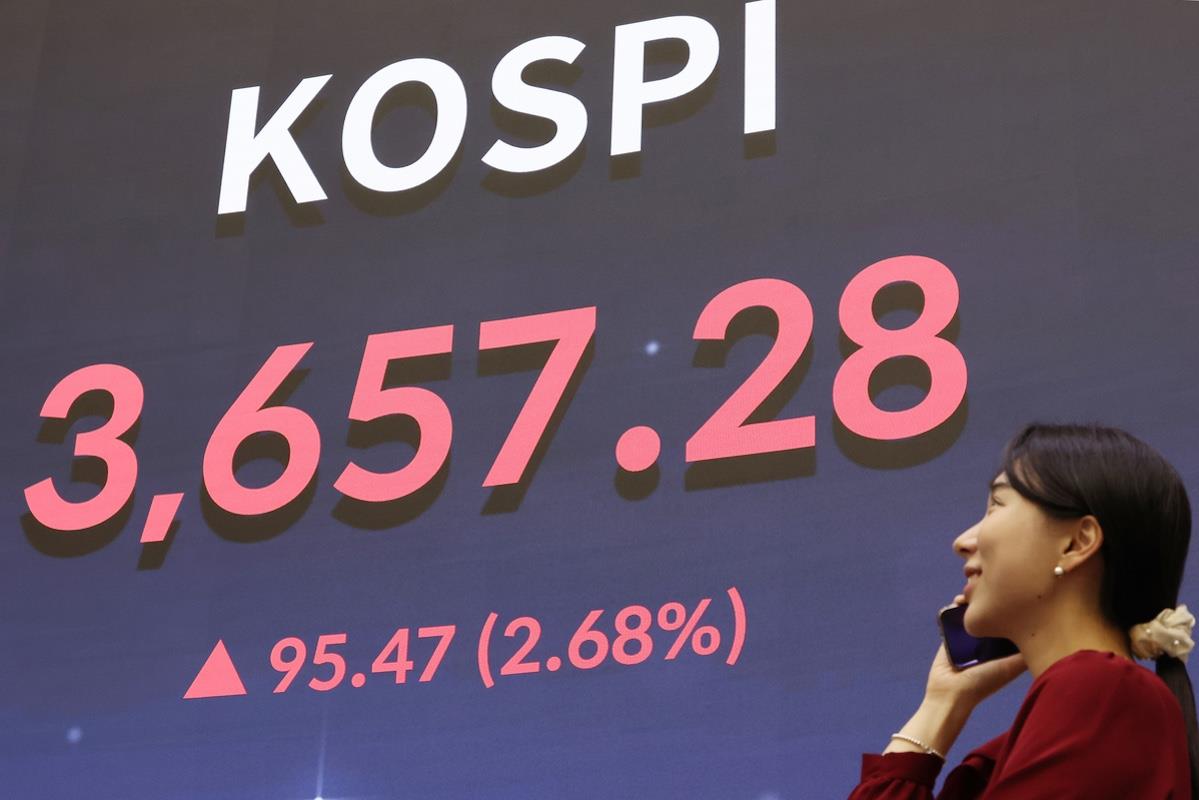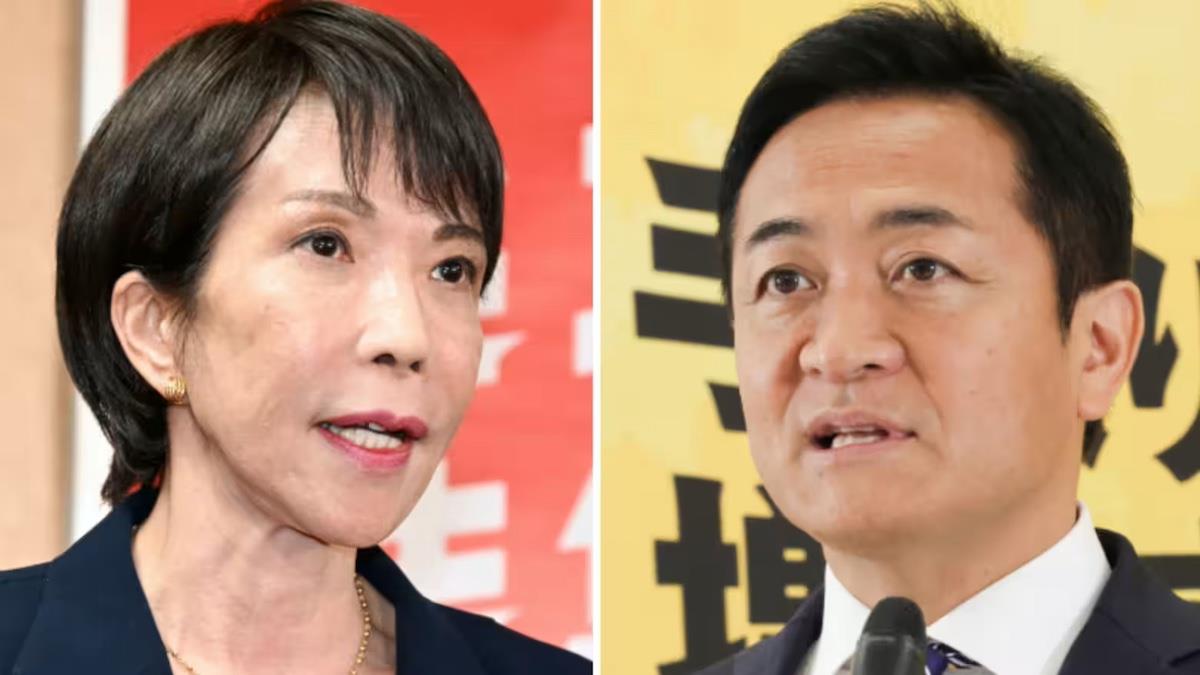
Japan's Leadership Drama Won't Change The Economic Storyline
It would be better for Asia's second-biggest economy if we could dismiss this question out of hand. If we could say definitively that the Liberal Democratic Party's Sanae Takaichi or the Democratic Party for the People's Yuichiro Tamaki would plot a markedly different path. Sadly, we can't.
Takaichi, 64, is working to keep in power the same party that's ruled Japan with only two brief interruptions since 1955. Though she would be Japan's first female leader, Takaichi is all about resurrecting the mediocre policies of her mentor Shinzo Abe. If he couldn't make“Abenomics” work in nearly eight years as prime minister from 2012 to 2020, why would Takaichi succeed?
Tamaki, meanwhile, also favors giving the Abe era's fiscal loosening and ultralow interest rates another go. Sure, the 56-year-old talks a good game of boosting workers' take-home pay through tax cuts.
To do that, though, Tamaki must prove he can do two things. One, stay in office longer than the 12 months most Japanese leaders get in the top job. Two, keep Japan's bond market from tanking as he adds to the national debt.
The same could be said of Takaichi, who already has markets betting on a weaker yen and an end to the Bank of Japan's tightening cycle. Though Abenomics was weak on increasing competitiveness, innovation or Japan's stable of game-changing startups, it sure did send the yen tumbling and Nikkei 224 Average stocks skyward.
But given the LDP's weak election performances of late, its lack of an outright majority and the dearth of fresh ideas coming from Takaichi, it's hard to see her premiership lasting longer than the roughly 365 days outgoing Prime Minister Shigeru Ishiba got.
Tamaki, meanwhile, has a different challenge on his hands. A paradox of Japanese politics is that there's often limited daylight between dueling parties' economic views. Some details differ, but little of what Tamaki is offering will seem new, creative or compelling to most LDP voters.
Odds are, Tamaki would be less hawkish on the world stage than staunchly conservative China critic Takaichi. But foreign affairs isn't the animating issue for most Japanese in 2025, even amid US President Donald Trump's trade war. It's that inflation is racing ahead of wage gains.
The Trump question surely looms large. But then from the Abe to Ishiba governments - and the two other premiers in between them - Tokyo has yet to push back against US policies. Trump didn't even seem to know Ishiba's name, calling him“Mr. Japan.”
Would self-described Margaret Thatcher super-fan Takaichi, Japan's“Iron Lady,” take on Trump? Or would she pull an Abe and just kiss the ring? True, Takaichi last month hinted at a“renegotiation” of the US-Japan tariff deal. Particularly, the US$550 billion“signing bonus” that Trump is demanding. Would she dare? Only time will tell.
Latest stories
Turkey-Bangladesh air defense deal jolts South Asia's skies

Kospi rally shows Trump's trade war worries way overblown

Trade, Covid, rare earths and a real danger of global recession
Yet the LDP's relationship with Trump has tended more toward the abusive kind rather than a meeting of equals. The only real way for Japan's next leader to avoid the political revolving floor that spits out a new one each year is to put some bold reforms on the scoreboard.
Takaichi seems more inclined to double down on a weak yen and increased fiscal stimulus. That's hardly what Japan needs at a moment when China's global market share is increasing.
For 10 years now, Xi Jinping has been broadening his“Made in China 2025” scheme. It aims to increase China's global footprint in artificial intelligence, biotechnology, electric vehicles, renewable energy, semiconductors and other technologies of the future. It means that even as China grapples with deflation, a giant property crisis and weak demand, it's still multitasking enough to raise its tech.
In Japan, leaders are too busy struggling to keep their jobs to do their job. Japan is lagging in the tech“unicorn” and AI races, while its labor productivity is still among the lowest in the Organization for Economic Cooperation and Development.
China's massive public investments in industry mean that, even as Tokyo dithers, China is commodifying many sectors in which Japan long thrived: cars, ships, electronics, batteries, robots, semiconductors, petrochemicals, weapons, you name it. As China speeds up Asia's economic clock, Tokyo politics is moving at its own plodding pace.
All this leaves Japanese markets in limbo. Though Nikkei 225 stocks recently hit all-time highs, the bond market is deeply troubled by Tokyo's fiscal trajectory. The price for either Takaichi or Tamaki to win power is almost certain to be budget-busting tax cuts. With a debt-to-gross domestic product ratio of around 260% and Japan's population shrinking at a record pace, bond shortsellers have government bonds in their sights.
Inflation remains well above the BOJ's 2% target, and continues to outpace increases in incomes.
“Japanese wage growth is stuttering,” says Stefan Angrick, Japan economist at Moody's Analytics, pointing out that average monthly cash earnings rose just 1.9% year over year in August, well below consensus forecasts.“With wage growth stumbling and inflation proving sticky, the Bank of Japan will find it hard to justify a rate hike in the near term.
The trouble is,“this wage malaise isn't new,” Angrick says.“Pay growth has been underwhelming for months.”
The fact that pay growth is slowing, Angrick adds,“is hardly surprising, given the shocks hitting the economy this year.” US tariffs and threats or an escalating trade war are damaging manufacturing, creating uncertainty and delaying investment in capital and workers.
At the time, he says,“it's striking that underlying wage growth hasn't proven more resilient, even after three years of 'shunto' wage negotiations producing multi-decade record results.”
Against this backdrop, Ishiba's exit comes as little surprise. He struggled to articulate a compelling vision for the economy and failed to resonate with the public, who were struggling with cost-of-living challenges. Ishiba, a fiscal conservative, repeatedly dismissed policy options, whether from the opposition or his own party, as too populist.
That seems sure to change in the days and weeks ahead. The Japanese government bond (JGB) market has had a chaotic 2025. Starting in mid-May, turmoil related to Trump's tariffs quickly ended up on Japanese shores, with government bond yields spiking in headline-grabbing ways.
The volatility culminated with a failed 20-year bond auction. In May, the typically routine sale of US$6.9 billion issues maturing in 2045 drew the least interest since 2012. The“tail,” gap between the average and lowest-accepted prices, was the worst since 1987. Suddenly, #JGBCrash was trending in Asian cyberspace.
Tokyo ended up sending shockwave back toward the US. In late May, US Treasury Secretary Scott Bessent expressed concern that turmoil in Japan was pushing US yields higher, the way Treasury market turmoil had unnerved Japan earlier that month.
That same month, Ishiba hardly helped things by saying that Japan's deteriorating finances are“worse than Greece.” It put Japan in global headlines for all the wrong reasons at the worst possible moment.
Ishiba was making a more nuanced point than that. His argument was aimed at lawmakers planning to cut taxes. Ishiba framed it as a luxury Japan couldn't afford, given its lack of fiscal space. Yet his gaffe went viral in market circles - in the worst possible ways. No doubt it drew the attention of credit-rating companies everywhere.

Sign up for one of our free newsletters
-
The Daily Report
Start your day right with Asia Times' top stories
AT Weekly Report
A weekly roundup of Asia Times' most-read stories
The risk of surging bond yields may limit the next government's latitude to loosen fiscal policy. If Takaichi gets the top job,“market participants will then likely shift their focus to potential economic stimulus measures- including the possible removal of the temporary gasoline tax - and the passage of a supplementary budget,” notes Sho Nakazawa, analyst at Morgan Stanley MUFG.
Yet the global headwinds zooming Japan's way also complicate the BOJ's ability to continue hiking rates. Of course, Japan should be hiking rates and leaving 24 years of quantitative easing in the rearview mirror.
Zero rates have done far more harm than good. Ultra-loose monetary policy removed all urgency to create more economic energy from the ground up, rekindle innovation and attract more foreign talent to augment an aging, shrinking workforce. It took the onus off CEOs to invent, restructure and take risks.
Now, the BOJ is struggling to find an exit from QE. In January, Governor Kazuo Ueda managed to hike rates to a 17-year high of 0.5.%. Since then, the BOJ has held rates steady amid concerns about US tariffs slamming growth. At present, even Japan's government thinks the economy will grow just 0.7%, at best, in 2025.
The BOJ has been tapering its bond purchases. And now, stocks, too, as the BOJ throttles back on its titanically large holdings of exchange-traded funds.
Yet as global risks mount, some are wondering if the BOJ's next move will be to cut rates, not raise them. It's possible, given the increasing fallout from Trump's tariffs. Even so, investors have every reason to worry that a new government in Tokyo will change little about the direction of Japanese politics and the economy.
“Regardless,” say economists at BMI, a unit of Fitch Solutions,“the next prime minister would still face the same problematic legislative dynamics as Ishiba, unless a bigger coalition is formed.”
The trouble, of course, is that neither Takaichi nor Tamaki - or the other possible choices for Japan's next prime minister - is known to be an economic reformer. That's a problem, considering that Tokyo has largely squandered the last 25 years during which it had a wide window of opportunity to remake Japan.
Is that about to change? It takes a certain kind of wild-eyed optimism to conclude yes.
Follow William Pesek on X at @WilliamPesek
Sign up here to comment on Asia Times stories Or Sign in to an existing accounThank you for registering!
An account was already registered with this email. Please check your inbox for an authentication link.
-
Click to share on X (Opens in new window)
Click to share on LinkedIn (Opens in new window)
LinkedI
Click to share on Facebook (Opens in new window)
Faceboo
Click to share on WhatsApp (Opens in new window)
WhatsAp
Click to share on Reddit (Opens in new window)
Reddi
Click to email a link to a friend (Opens in new window)
Emai
Click to print (Opens in new window)
Prin

Legal Disclaimer:
MENAFN provides the
information “as is” without warranty of any kind. We do not accept
any responsibility or liability for the accuracy, content, images,
videos, licenses, completeness, legality, or reliability of the information
contained in this article. If you have any complaints or copyright
issues related to this article, kindly contact the provider above.
Most popular stories
Market Research
- Thinkmarkets Adds Synthetic Indices To Its Product Offering
- Ethereum Startup Agoralend Opens Fresh Fundraise After Oversubscribed $300,000 Round.
- KOR Closes Series B Funding To Accelerate Global Growth
- Wise Wolves Corporation Launches Unified Brand To Power The Next Era Of Cross-Border Finance
- Lombard And Story Partner To Revolutionize Creator Economy Via Bitcoin-Backed Infrastructure
- FBS AI Assistant Helps Traders Skip Market Noise And Focus On Strategy




















Comments
No comment